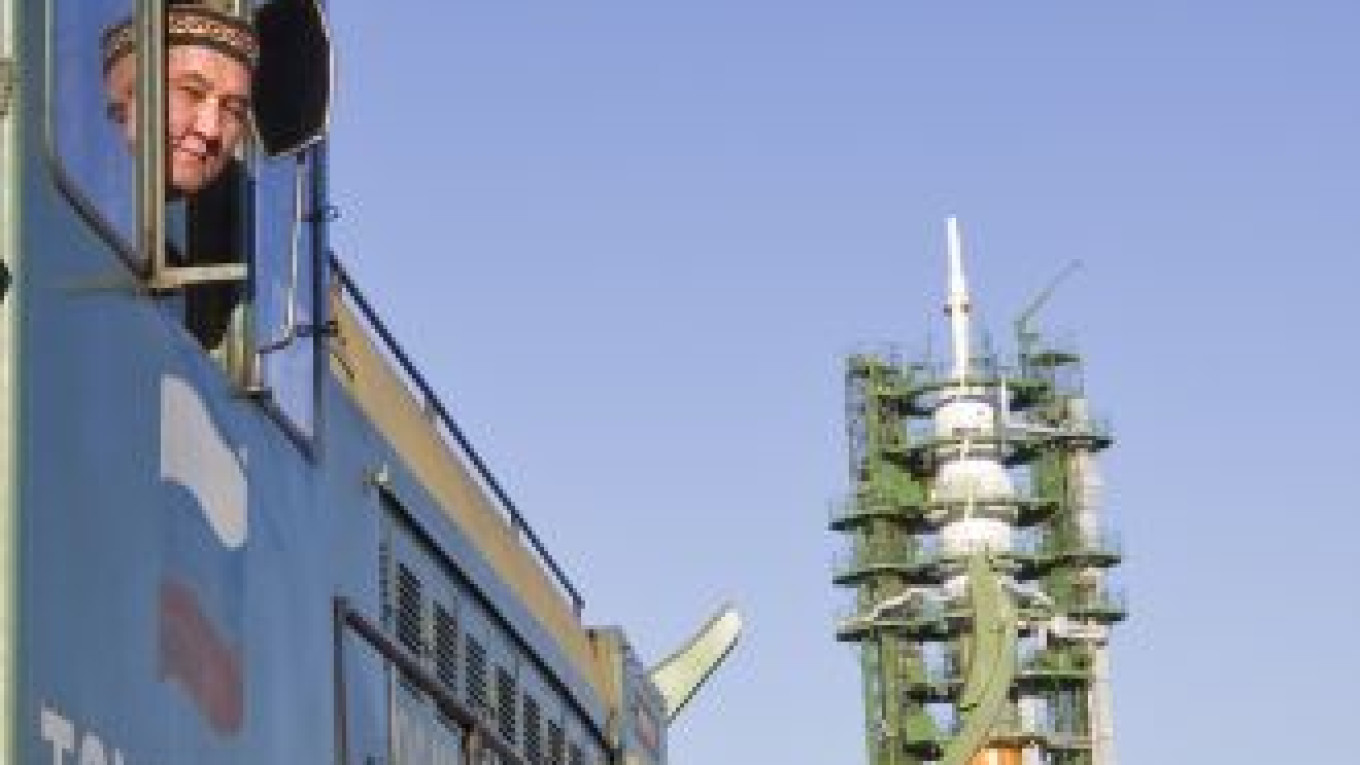BAIKONUR, Kazakhstan — A Russian-made Soyuz rocket was erected into place Sunday ahead of the start of a mission to take a three-man crew to the International Space Station.
For the first time since 1984, a manned launch will take place from Baikonur Cosmodrome Launch Pad 31. The pad that is normally used, from which Yury Gagarin began his landmark space mission, is undergoing modernization.
The Soyuz craft remains the only means for international astronauts to reach the space station since the decommissioning of the U.S. shuttle fleet in 2011.
NASA's Kevin Ford and Russian astronauts Oleg Novitsky and Yevgeny Tarelkin will blast off Tuesday from the Russian-leased facility in southern Kazakhstan and will spend about six months on the orbiting laboratory.
Federal Space Agency spokesman Alexei Kuznetsov said Launch Pad 31 had recently been renovated and already been used for an unmanned mission over the summer.
"Now we need to do similar things at Site No. 1. As soon as that is finished, it will be in a condition to resume launches," he said.
Site No. 1, better-known as Gagarin's Start, in recognition of the historic 1961 mission, was last overhauled in 1983.
The need for a backup launch site became particularly acute with the decommissioning of the U.S. shuttle fleet, when Gagarin's Start became the only operating pad available for manned launches to the space station.
The Soyuz's trip will last about two days and end when it docks with the Poisk module in the Russian segment of the space station.
Ford, Novitsky and Tarelkin are scheduled to remain in orbit until March, covering a busy time at the space station that will include the first-ever arrival of Cygnus, a commercial cargo vehicle from Orbital Sciences, of Dulles, Virginia, scheduled for December.
Another two commercial SpaceX Dragon craft are also expected over the same period, as are an additional four Russian Progress resupply vehicles.
In August, a Russian booster rocket failed to place two communications satellites into target orbits, stranding the Russian Express MD-2 and Indonesia's Telkom-3 satellites in a low orbit where they could not be recovered.
William Gerstenmaier, NASA's associate administrator for space operations, said at Launch Pad 31 that the Russian space agency treated crewed programs differently from other launches.
"The hardware that's chosen for this rocket is better-quality hardware than they would use for a satellite or for a different launch because of the criticality of what they're doing," he said.
Related articles:
A Message from The Moscow Times:
Dear readers,
We are facing unprecedented challenges. Russia's Prosecutor General's Office has designated The Moscow Times as an "undesirable" organization, criminalizing our work and putting our staff at risk of prosecution. This follows our earlier unjust labeling as a "foreign agent."
These actions are direct attempts to silence independent journalism in Russia. The authorities claim our work "discredits the decisions of the Russian leadership." We see things differently: we strive to provide accurate, unbiased reporting on Russia.
We, the journalists of The Moscow Times, refuse to be silenced. But to continue our work, we need your help.
Your support, no matter how small, makes a world of difference. If you can, please support us monthly starting from just $2. It's quick to set up, and every contribution makes a significant impact.
By supporting The Moscow Times, you're defending open, independent journalism in the face of repression. Thank you for standing with us.
Remind me later.


